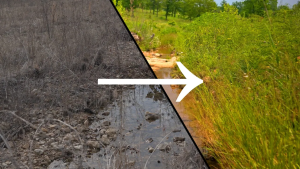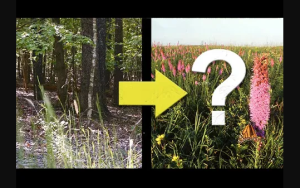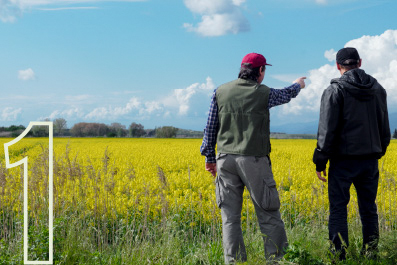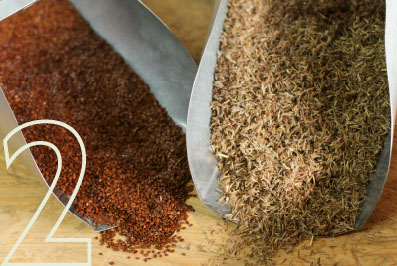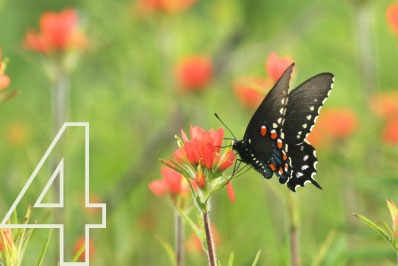Restoration of Tallgrass Prairies, Glades, and Savannas
Restoring the system
Native grasslands then and now
Many of the early explorers left written record of the land’s appearance when they settled or traveled through. They encountered many different grassland types. Today, the temperate grasslands of the world, which are so valuable for raising crops and livestock, are the most endangered and least protected habitats on earth. Counted among these grasslands are our own native grasslands:
Tallgrass prairies
Savannas and woodlands
Both savannas and woodlands are grasslands with the incorporation of trees. (Technically, a woodland has more trees than a savanna.) These ecosystems were the meeting ground of the tallgrass prairie and the forest. In these savannas and woodlands, trees and herbaceous plants (grasses and wildflowers) coexisted.
Fire and herbivores were the mediator in this uneasy relationship between very different plant types. Today, most of the land that would have historically been savanna and woodland bears no resemblance to Henry Rowe Schoolcraft’s description of “a tall, thick and rank growth of wild grass…in which the oaks are standing interspersed like fruit trees in some well cultivated orchard, and giving the scenery the most novel, pleasing and picturesque appearance.
Now, for the most part, we see forest or there is open land. The two do not intermingle, due in large part to the removal of fire from the ecosystems.
Glades
Restoration protects the plants
Because many of our native ecosystems are endangered, so are the plants that are associated with them. Each ecosystem has a unique array of plants associated with it. Some plants may inhabit more than one grassland ecosystem, but others may be obligates of specific ecosystems. Pale Purple Coneflower, for example, can be found growing on glades, savannas, and prairies while its close relative, Yellow Coneflower, is found only on the glades. By re-creating or restoring these ecosystems, the plant species allied with them are also protected.
Restoration protects the wildlife and pollinators
Native ecosystems once lent shelter to abundant populations of wildlife ranging from the large mammals to the smaller mammals, amphibians, and insects. Today, some of these animals still roam across the countryside, but many, such as the bison and elk, are a memory of yesteryear.
Some species of wildlife depend on certain ecosystems. For example, glades are the much-preferred habitat of the Eastern Collared Lizard, Lichen Grasshopper, and Greater Roadrunner. Restoring our imperiled native plant communities creates habitat for species of wildlife that are adapted to the ecosystems.
Many native pollinator species cannot exist without native plants. In some cases, this dependency is so strong that dependent pollinators and plants cannot exist independently. In fact, about one-third of Missouri’s native bee species need a certain plant species or narrow group of plants to carry out their life. Another third of these bees require a certain ecosystem. Planting a diverse pallet of natives provides necessary habitat requirements for pollinators.

